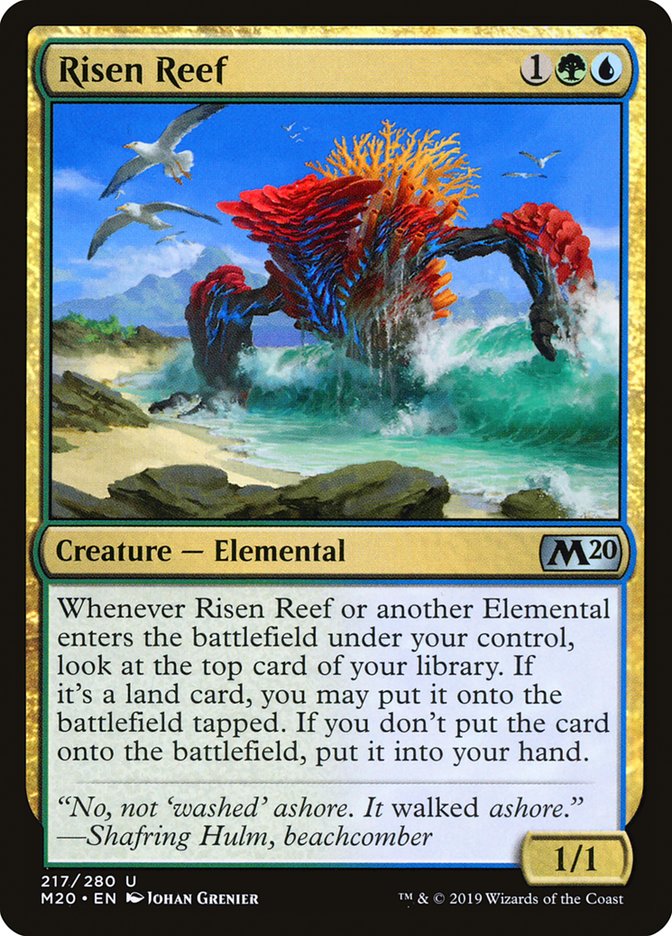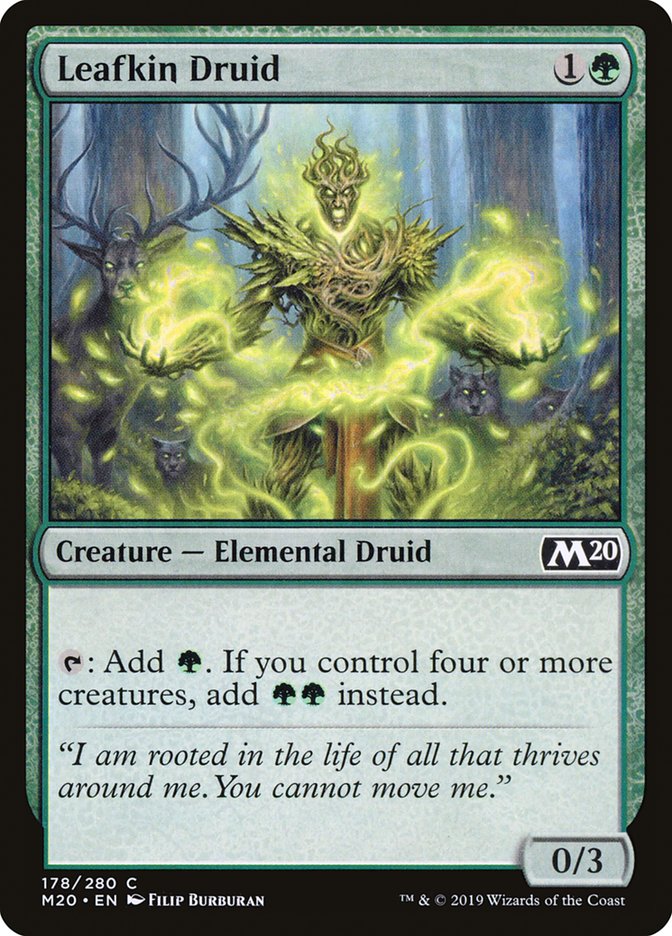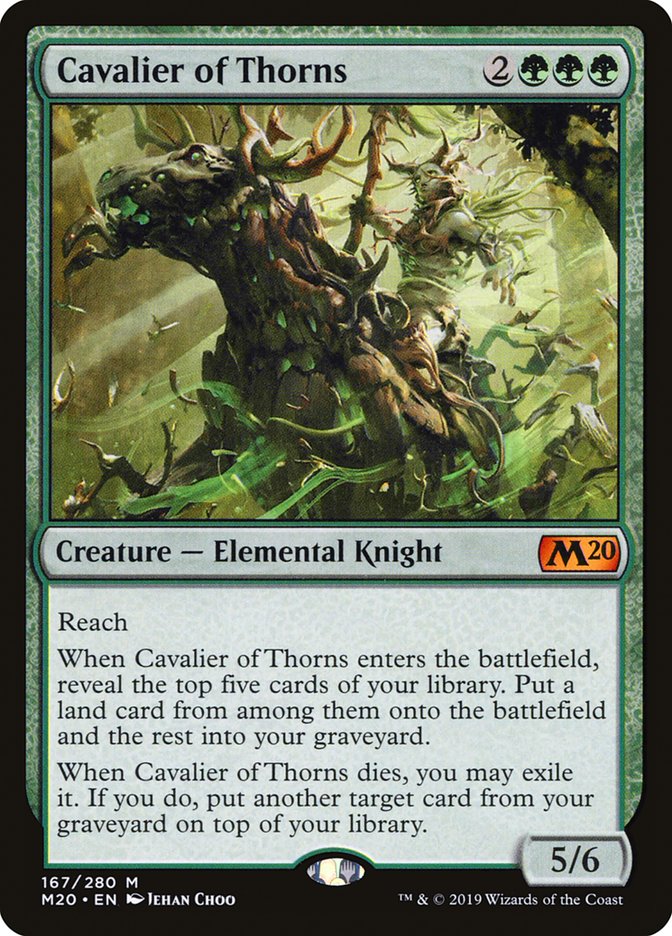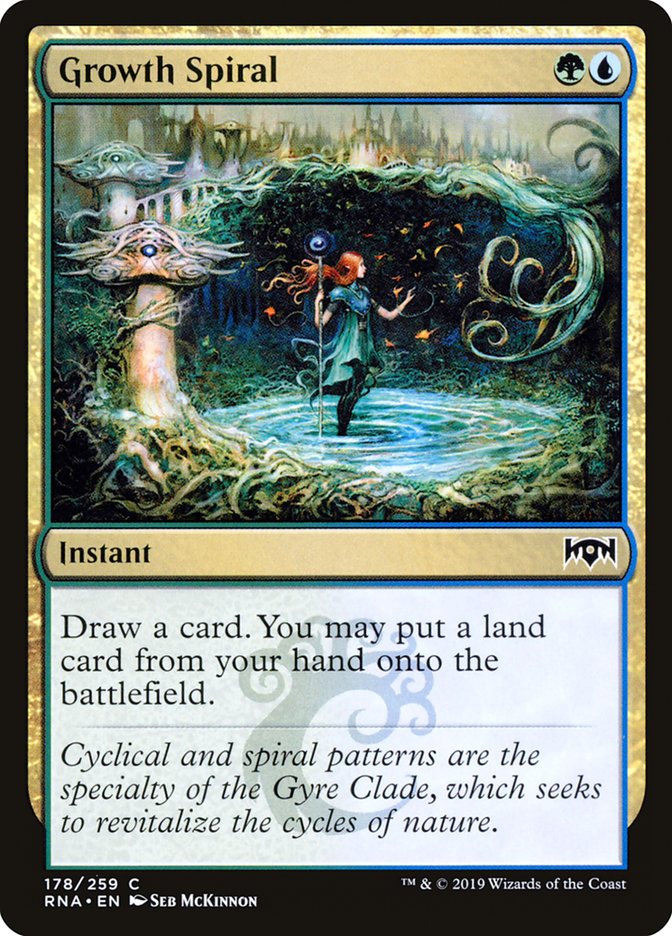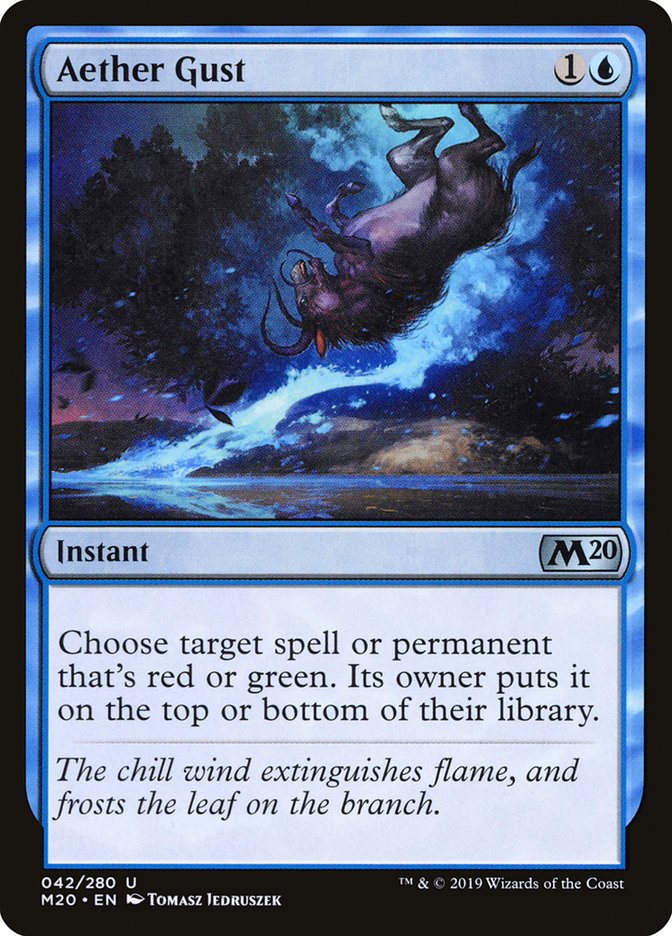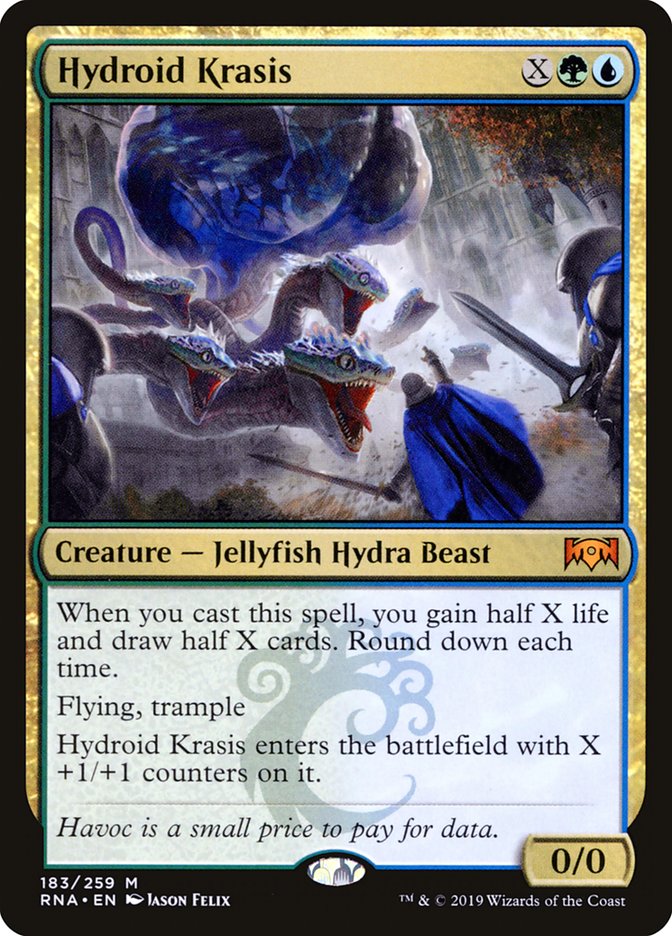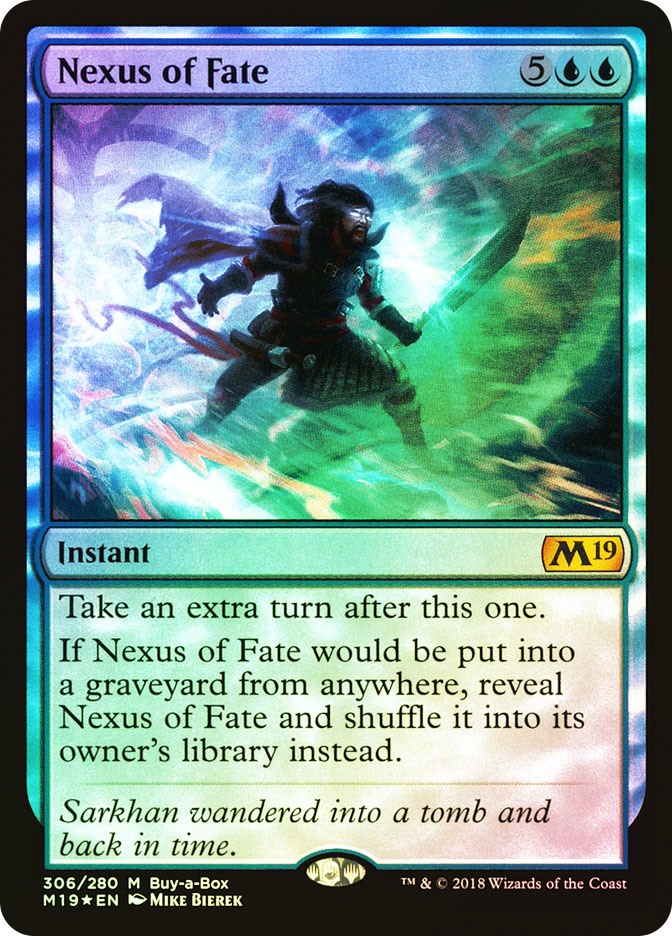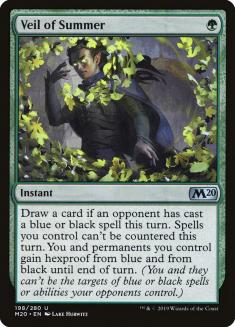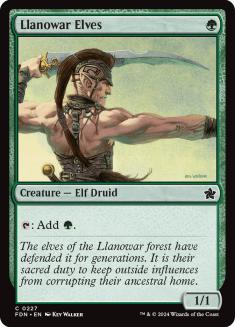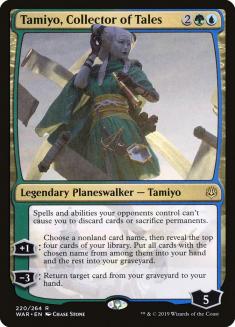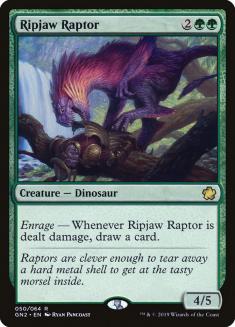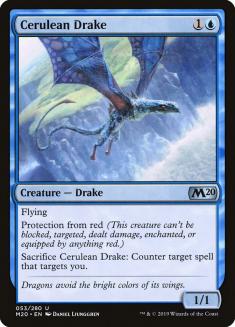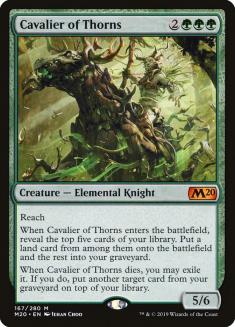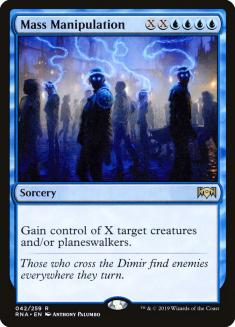Yesterday, I chose Simic Ramp as my deck of choice for What We’d Play and since then, nothing’s changed. The deck has felt absolutely disgusting and the format will eventually warp around it much like it did last season due to Esper’s dominance. I’ve also said for a while that Nissa, Who Shakes the World is the best card in Standard, but the supporting cast around her wasn’t that strong…
It didn’t take much to push Nissa over the top, but when asking Core Set 2020 for an inch, the set gave a mile. These three cards are just phenomenal in a Simic shell, as they give a deck that already wants card advantage and mana acceleration all the redundancy it could ever need. On top of that, they all synergize together!
When it all comes together, this deck feels almost as broken as Four-Color Saheeli or Temur Marvel. Seriously, I think the shell has that much potential! Let’s kick things off today by talking about what Simic Ramp is trying to do and why I think it has a place in the current format.
Creatures (19)
Planeswalkers (7)
Lands (26)
Spells (8)
Sideboard

Simic Ramp, in a vacuum, is designed to ramp its mana and then draw lots of cards. Those drawn cards are often more mana, so it can draw even more cards. Eventually the deck wins via Tamiyo, Collector of Tales thinning the deck and taking infinite turns with Nexus of Fate. This deck isn’t trying to interact. In fact, the maindeck actually has no way to interact with an opponent outside of combat. This deck is the epitome of “doing its own thing.”
The only reason this deck is possible is that it’s very difficult to interact with outside of decks that can put immense pressure on it first. Mono-White Aggro, Mono-Red Aggro, and Orzhov Vampires are all matchups that this deck can struggle with, but currently those decks are having issues beating the rest of the metagame (Mono-White and Orzhov Vampires are especially having difficulty, as they both have a bad Mono-Red matchup). That’s why I’m respecting Mono-Red so much, as it’s what I assume will be the most-played aggressive deck this weekend at SCG Worcester.
All this said, it’s Week 1, which makes it very difficult to predict what’s actually going to happen. If you follow @Arenadecklists, you know just how many differing opinions there are about Standard. In all honesty, there’s a much higher chance that I’m wrong about this deck than I’m right. It’s just how Week 1 goes sometimes, as we’re all trying to not only find the best decks while also trying to predict the metagame so our interactive spells are correct.
That’s another reason why I’m suggesting this deck for SCG Worcester. It’s linear, powerful, and has a very good gameplan. No matter what, you’ll always get an opportunity to do your thing even if you get the metagame horribly wrong. That’s not something you can say about Esper variants, as you have to be dead on the money when predicting the metagame so that your cards line up correctly.
Tips and Tricks
Let’s talk about some tips and tricks about the deck before finishing up with the sideboard guide.
Risen Reef’s ability to put a land onto the battlefield is optional.
This is extremely important to remember, as you’ll often get a Risen Reef trigger without a land in hand to make your turn’s land drop. Instead of putting a land from the top of your library onto the battlefield, you can simply put it into your hand so you have another untapped land for the turn. This can come up even when you have a land drop available, like when you have Growth Spiral in hand.
Always be cognizant of your creature count with Leafkin Druid.
This is most important when you are sequencing with Nissa, Who Shakes the World. Often, you’ll be able to animate a land which gets you to four creatures, so you net one additional mana for the turn. More subtly, you’ll sometimes sequence Leakin Druid before Risen Reef when the additional mana on the following turn lets you deploy more spells.
They can respond to your Cavalier of Thorns enters-the-battlefield trigger with a removal spell.
This one is very important to keep in mind, as there are many games where you’ll be counting on the Elemental Knight putting a payoff spell back on top of your library once it’s dealt with. With Cavalier of Thorns enters-the-battlefield trigger on the stack, an opponent can kill it, which triggers its death trigger. The death trigger resolves first, putting another card from your graveyard on top of your library, and then the top five cards of your library are placed into your graveyard from its initial trigger.
Since this is the case, it’s best to simply not use Cavalier of Thorn’s death trigger, since its death trigger is optional. Additionally, it will exile the Cavalier from the graveyard while also lowering your chances of finding a land, further delaying your eventual Nexus of Fate loops.
Know your Risen Reef and Cavalier of Thorns enters-the-battlefield trigger sequencing.
Two or more triggers will go on the stack whenever you cast Cavalier of Thorns while having control of Risen Reef(s). It’s important to resolve Cavalier of Thorns first, as you’ll lose value every time either trigger finds a Temple of Mystery. Resolved out of order, you’ll put the Temple of Mystery onto the battlefield, get a scry, but ultimately mill the top five cards anyway. The reverse is getting to see the top card of your library before your Risen Reef trigger(s), which is a much better scenario.
Growth Spiral in your main phase.
If you have a land in hand and you plan to cast Growth Spiral during your turn, just do it right away – especially on Turn 2. Sometimes you’ll draw Llanowar Elves, which lets you cast it on Turn 2 and opens the door for a Turn 3 Nissa. Even on other turns, you may draw another accelerant you want to deploy.
Obviously there are times where this isn’t the case, especially after sideboard, but just make sure you have a reason for not firing it off right away. At the very least, don’t get into the habit of playing it at instant speed simply because it’s an instant.
Aether Gust can reset your own Hydroid Krasis.
This play doesn’t come up often, but it’s important to know it exists. Sometimes you’ll have all the mana in the world, including a Nissa, but nothing to do with it. At the end of your opponent’s turn, you can put a small Hydroid Krasis back on top of your deck, allowing you to “go ham” with it on your next turn. Again, this rarely happens, but its something to keep in mind next time you’re flooding out.
Sideboard Guide
All right, so before we do this thing, I have to preface this with the fact that things in Core Set 2020 Standard are a loose goose right now. What is a loose goose, you say? Well, it’s my way of saying “all over the place.” Decks, formats, and even people can be a loose goose and it’s not a bad thing.
It’s just…a thing.
Right now, there are a ton of unique decks running around and the builds are wildly different. Keep this in mind when you’re playing your matches. Also, keep this in mind as you work on perfecting this deck. While I have confidence in the archetype, I can’t say for a fact this is the way you want to build the sideboard. I say this as there are a few matchups where I want other things, yet currently don’t want to just give up the Mono-Red Aggro matchup. If you can afford to do this, I suggest adding cards like Negate, Disdainful Stroke, and a fourth Veil of Summer.
VS Esper Variants
Out:
In:
This matchup has felt like a complete joke every time I’ve played against it. Your deck is redundant, which makes their disruption worse, and when you draw cards, things get out of control very quickly. Esper wins by drawing the correct answers, finding card advantage, and hoping Simic doesn’t draw well – a very tall order!
Don’t just go into goldfish mode against them, though. The best way to think about how to sequence against Esper is trying to make their next turn as awkward as you can. This means trying to play around what interactive spells you think they have while also making sure you punish them when they tap out. Don’t just jam and hope it all works out.
VS Mono-Red Aggro
Out:
In:
This is a very rough matchup, as the only way to really win games is to overpower them with Nissa and Hydroid Krasis. This isn’t impossible, but it is your only angle, and that’s why I’m playing Cerulean Drake over Thrashing Brontodon. Your plan should be to overpower Experimental Frenzy, not waste time interacting with it.
The same can be said about the Simic Nexus matchup, as while Thrashing Brontodon does interact with some of their cards, it does so at the cost of a lot of your early mana. Simic Ramp is designed around doing its own thing, so you must do that over playing midrange-level interaction as often as you can.
VS Simic Nexus
Out:
In:
I honestly can’t tell you how this matchup goes. I’d assume we’re at a disadvantage, but I’d have to play the games to be sure of that. This sideboard plan also doesn’t seem great against them, so you’ll have to be pack more of a punch if Simic Nexus is a popular deck in your metagame. I’d suggest adding a few more counterspells for the matchup, but that’s about all we really can do.
VS Gruul Midrange
Out:
In:
This matchup is great and gets even better after sideboard. It’s just so difficult for a Gruul Midrange deck to get past Cavalier of Thorns or even compete with us when we’re on the play with a fast start. Obviously the same can be said when they’re on the play, but that changes after sideboard. This is really the matchup where Aether Gust shines, as it’s a great way to break serve by interacting with one of their first plays before deploying one of our larger defensive permanents.
Mass Manipulation is also an absurd card against Gruul, which is one of the major reasons why we have it in the sideboard. It’s for Gruul and, shockingly enough, the mirror.
VS Simic Ramp
Out:
In:
If this deck breaks out this weekend, don’t say it’s because of me. I’ve already played the mirror multiple times and can tell the deck is starting to trend upward. Honestly, this article is half telling you what to play and half warning you of the near-future if you weren’t previously in the know – Simic Ramp will be played and it’s important to know what to do.
Nexus of Fate is just too slow in the mirror to be a proper win condition. Mass Manipulation is just better, as the game often comes down to who goes Nissa into Mass Manipulation first. This could lead me to wanting Negate in the sideboard, but Aether Gust has also been absolutely fantastic as a spell I can still cast after tapping out.
You could also sideboard in some copies of Veil of Summer, but that will only be good if you’re doing your degenerate thing on the following turn. Otherwise, they will just continue to amass a bigger battlefield than you while returning Mass Manipulation to their hand with Tamiyo (which is why I don’t have Veil of Summer coming in for this matchup).
VS Mono-Blue Aggro
Out:
In:
These might not be the best cards to take out, but I know I’ll want Veil of Summer. Whenever you’re able to force through something powerful, Mono-Blue Aggro almost always folds. This is especially true when the card you’re sneaking onto the battlefield is Cavalier of Thorns. I assumed this matchup and the Simic Flash deck Martin Juza has been playing would both be bad, but I’m undefeated against both. Veil of Summer is insane against linear blue decks!
VS Mono-White Aggro and Orzhov Vampires
Out:
[This space intentionally left blank.]
In:
[This space intentionally left blank.]
Um…yeah…that can’t be right…
Seriously, though, it would take a lot of swing these matchups. After all, we’re a Simic Ramp deck. It’s not like there’s a card we can put in the sideboard and suddenly swing the matchup in our favor. If you know of one, I’d love to try it out.
Once I’m done with the Fandom Legends Standard tournament today, I’ll be switching my focus to Modern and Modern Horizons Draft, since Mythic Championship IV is right around the corner. I hope you have fun with this take on Simic Ramp and win all the matches this weekend in Worcester! I’ll be back next week to most likely talk about Modern, and then I’m heading to Barcelona, baby!


